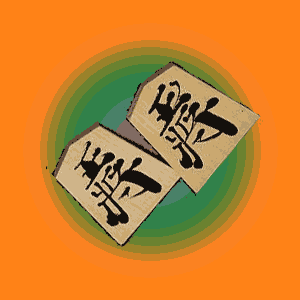Ancient Shogi Forms
by Vidya.S
(India)
The word Shogi means general's board game. This game is also known as Japanese Chess. It is a board game must have two players. The earliest form of the Shogi game is Chaturanga originated in India in 6th century. This game spread all over the world in many forms and names. Shatranj in Arabia and Chess in Europe are the western branches and Xiangqi in China and Changgi in Korea are the northern branches. In the 10th or 12th century, the game reached Japan.
According to a historic document Nichureki, an edited copy of Shochureki and Kaichureki from the Heain period, Shogi in it's present form was played in 16th century. The exact history of Shogi is still unknown. In the book Kirinsho (1027), we can see the explanation of Shogi (how to calligraphy the characters).
In early period, it is believed that there existed 8x9 or 8x8 boards for Shogi. In 8x8 board, there is one Gold general while in 8x9 there is an extra gold as in the latest version. In about 1300, a Buddhist monk describes Shogi in his book, Futsu shodoshu and classified the game into two forms.
Those are Dai Shogi (Large Shogi) and Sho Shogi (Little Shogi). The Dai Shogi has 15x15 board and 130 pieces for playing. The So Shogi has 9x9 board and 21 pieces. The pieces are as same as modern Shogi plus a Suizo (Drunk Elephant). The drop concept was introduced in Sho Shogi in 16th century, inspired by the war customs of Japan.
It is assumed that the origin of modern Shogi is in the time of Emperor Go-Nara who reconstructed Sho Shogi by introducing the drop concept and eliminating the Suizo. The first professional academy of Shogi was founded by Sansa Honinbo, the player of Shogi in his period, in 1612.
The board of modern Shogi consists of 9 columns and 9 rows. The players are called Sente and Gote. The Sente is the player playing on the Black and the Gote is the player playing on the White. The board is always in rectangular shape and no differentiations as seen in the Chess.
A set of 20 wedge-shaped pieces are provided to each players. They are not in identical sizes, slight differences are there. The pieces are 1 king, 1 rook, 1 bishop, 2 gold generals, 2 silver generals, 2 knights, 2 lances, 9 pawns.









